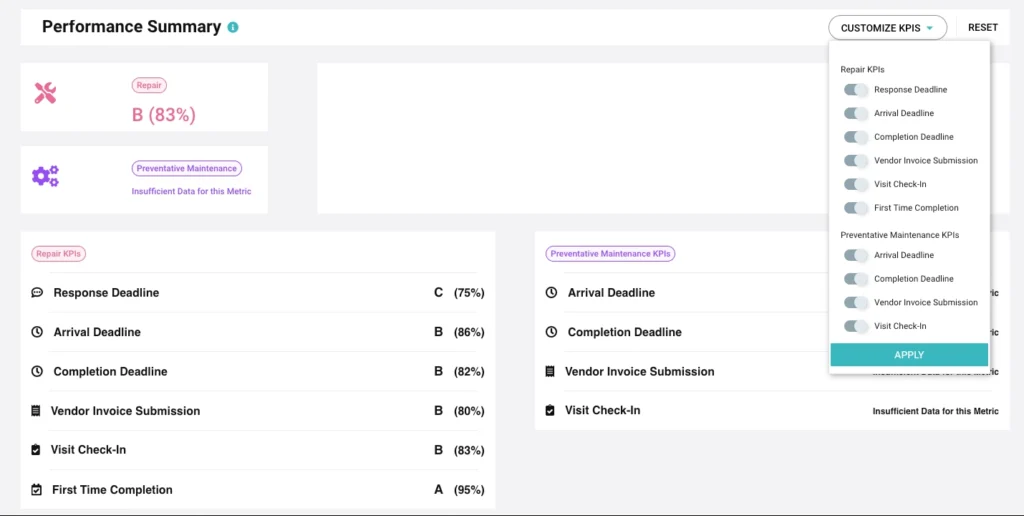
CMMS
Costly Confusion:The Truth Behind Hidden Vendor Costs

Managing vendor relationships can be tricky. While keeping your facilities running smoothly, it’s crucial to watch for unexpected costs that can quickly drain your budget. Hidden fees can be buried in invoices, disguised as necessary expenses, and before you know it, your overhead skyrockets. Knowing what to look for and implementing best practices to avoid these sneaky fees is key to keeping your operations on budget.
Common Hidden Fees in Vendor Charges
Hidden fees often sneak into vendor invoices, especially if you’re not diligent about reviewing them regularly. Here are some common ones to watch out for:
Service Call Fees
Vendors often build administrative or overhead costs into service call fees. Be cautious if you see multiple service call fees on a single invoice, which can inflate the total cost unnecessarily.
Markup on Materials
Sometimes, a line item may seem unusually high. Some vendors may include a markup fee on materials, and in some cases, double-markup by adding both the inflated material cost and a separate markup fee. It’s important to check that material costs are reasonable and don’t contain hidden markups.
Late Payment Fees
Missed payment deadlines often lead to penalties, but some vendors can add excessive late payment fees. Be clear on payment terms to avoid unnecessary charges.
Overhead & Profit (O&P)
Vendors may add O&P charges that don’t always reflect true overhead costs, inflating the price of services and materials.
Processing Fees
With some vendors being charged by platforms per work order, they may pass these fees onto you by adding administrative or processing charges to their invoices.
Return Trip Costs
If a vendor requires multiple return trips to resolve a simple issue, that’s a red flag. It can be a way to sneak in extra fees, especially for reactive service calls.
Best Practices for Avoiding Hidden Fees
The best way to avoid hidden fees is to be proactive with your vendor relationships and billing processes. Here are a few best practices:
Clear Agreements
Define clear rates for line items such as service calls, labor, and materials, including markup percentages. Set expectations upfront about acceptable charges and agree on transparency with vendors.
Regular Invoice Audits
Consistently review and audit vendor invoices to ensure charges align with agreed-upon rates. Spot-check invoices to verify they reflect the actual services provided.
Request Backup Documentation
Require vendors to provide supporting documentation, such as receipts or usage of check-in/check-out systems, to validate their charges.
Open Communication
Stay in touch with your vendors, especially your preferred ones. Ensure they’re comfortable using your platform and check for any difficulties they might have in processing work orders. Vendors facing challenges may hide administrative costs as “hidden fees.”
Probing Questions to Ask Vendors
If you suspect hidden fees or want to avoid them, here are some probing questions to ask your vendors:
What’s included in the service call fee?
Get a breakdown of what the fee covers, and ensure there are no added administrative charges disguised within the fee.
What percentage is being applied as a markup for materials?
Ensure transparency on how much markup is added to material costs, and compare this to standard rates across the industry.
Why are pricing structures increasing?
When a vendor requests to increase their rates, ask for details. What has factored into the increase, and is the change reasonable?
How Fexa Helps Eliminate Hidden Fees
Fexa is designed to provide the transparency and reporting you need to avoid hidden fees and keep your vendor costs in check. Here’s how Fexa is different:
Comprehensive Reporting
Fexa offers standard reporting tools and advanced analytics through Tableau, allowing you to visualize trends in costs by trade, geographic area, and more. This insight helps you identify abnormal billing patterns and potential hidden fees.
Transparent Billing & Cost Breakdown
Fexa has an intuitive Proposals and Invoices interface that makes it easy for vendors to provide a breakdown of costs.This prevents fees from slipping through unnoticed.
Vendor Performance Analysis
Fexa’s Provider Performance Snapshot gives you quick access to key performance indicators (KPIs) for each vendor. This allows you to monitor performance trends and assess whether billing behavior aligns with their work quality and efficiency.

Fexa’s Provider Performance Snapshot
No Vendor Fees
Unlike other platforms, Fexa doesn’t charge vendors to use the system, which reduces the likelihood that vendors will pass along additional processing fees to you.
Automated Pricing
Vendor pricing can be stored directly within Fexa, and when they create a quote or invoice, those rates are automatically applied, which greatly decreases the potential for unexpected charges.
Don’t Let Cost Control Confuse You
Hidden vendor fees can significantly impact your budget if left unchecked, but with the right strategies in place, you can avoid these pitfalls. By setting clear agreements, regularly auditing invoices, asking the right questions, and leveraging Fexa’s transparent and powerful platform, you’ll be able to control costs and ensure that your vendors are charging you fairly.



